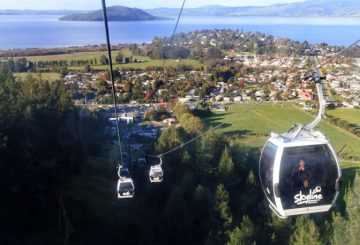自 2020 年初 Covid-19 首次进入我们的海岸以来,新西兰一直使用警报级别系统。12 月 3 日,这将改用新的交通信号灯系统。
总理贾辛达·阿登宣布,新的交通信号灯系统将生效。她说,人们必须了解这一点非常重要:“在大多数情况下,如果你接种了疫苗,你可以去做你通常期望的所有事情”
Ardern 继续说:“不同的是这些聚会在不同层次上的规模有多大。”
虽然被称为 “交通信号灯系统”,但其正式名称是 Covid-19 保护框架。
像交通信号灯一样,框架有三种设置:红色、橙色和绿色。
每个地区的疫苗水平将决定该地区的疫苗水平,但是到 12 月 3 日,疫苗水平将是红色还是橙色。
“我们将研究疫苗率,我们将查看病例率,这将是主要的决定因素,但我们也将务实。所以你知道,一个很好的迹象是你第一剂是否达到了 90%,这很好地表明了你要去哪里。”
红色
• 在这种情况下,酒店将允许开放疫苗证书,但人们的聚会将受到限制,保持身体距离,使用口罩和其他公共卫生措施。
• 需要保存记录和扫描,在航班、公共交通工具、出租车、零售商店和场地必须戴面罩。
• 建议大多数人在家工作,但是早期儿童教育中心、学校和库拉可以通过公共卫生措施开放。
• 公共设施最多可容纳 100 人,距离为 1 米。零售商店也需要确保 1 米的距离。
• 某些社区活动将允许容纳人数有限。
橙子
• 在此设置下,不适用人群聚会的限制,但是选择不使用疫苗接种证书的场所将关闭或采取公共卫生措施。
• 如果使用疫苗接种证书,聚集在酒店业、婚礼、教堂或其他礼拜场所、公共活动、密切接触企业和体育馆的人不受限制。
• 如果不使用证书,招待和聚会将受到限制。
• 如果不使用证书,活动、健身房和密切接触的企业将无法运营。
綠色
• 绿色设置是指社区中 Covid-19 病例水平较低的情况。
• 完全接种疫苗的人只要出示疫苗接种证书,就可以参加所有公共活动和招待场所。
• 选择不使用证书的场所将面临类似于当前警报级别框架的限制。


















































-360x245.jpg)










